Hair Transplant Turkey
All the secrets that hair transplant clinics in Turkey hide from you
If you’re considering a hair transplant in Turkey, this article is essential to read. It gives you a clear and complete understanding of the procedure so that you can make an informed decision with confidence.
Turkey hair transplant services have become globally renowned for their combination of advanced techniques and affordable pricing.
The hair transplant Turkey industry has drawn global attention thanks to competitive costs and high-quality results. Many international patients seek information such as how much is a hair transplant in Turkey or explore the best hair transplant in Turkey to make a well-informed decision.
A Wide Range of Hair Transplant Turkey Options
Turkish Hair transplant procedures offer a wide range of options, including different techniques, graft quantities, and treatment areas.
In Turkey, common approaches include FUE hair transplant Turkey, DHI hair transplant Turkey, and Sapphire Pen implantation techniques. Each method fits different patient needs and expectations.
Comparing Costs and Packages
Whether you’re comparing hair transplant cost Turkey vs. other countries or looking for a Turkey hair transplant package with accommodation and transfers, the variety of services is comprehensive.
The ideal age for undergoing a hair transplant in Turkey varies and depends upon some individual circumstances such as the age, overall health, and the extent of hair loss. For individuals researching how much is hair transplant in Turkey, cost often depends on the number of grafts and the chosen clinic.
The Role of Early Intervention and FUE Technique
Addressing hair loss early increases the chances of success. The FUE hair transplant involves extracting hair grafts from one part of the head and implanting them in another. This popular method plays a central role in many Turkey hair transplant cost plans because of its effectiveness and minimal scarring.
Choosing Between Sapphire and DHI Techniques
Patients can choose between the Sapphire pen and DHI (Choi Pens) techniques for their hair transplant. If a patient is a candidate for both, sometimes the doctor selects the most suitable method based on the patient’s specific case.
Clinics often include these options in detailed Turkey hair transplant package offerings.
Both techniques have distinctive characteristics and advantages, with the choice depending on your hair condition and baldness area. Both methods are effective when applied appropriately.
Best Hair Transplant Doctors in Turkey
Hair Transplant Turkey – Expertised Surgeons
Turkey is the home for some of the most skilled and experienced turkish hair transplant surgeons globally. Many have trained with advanced techniques and performed thousands of successful procedures, contributing to the country’s reputation for top hair transplant in Turkey.
ClinMedica’s Certified Turkish Hair Transplant Surgeons
Turkish surgeons at ClinMedica undergo intense training and hold certifications from international medical boards, ensuring high standards of care. Many sources often rank the clinic among the top 10 hair transplant clinics in Turkey for its quality and patient satisfaction.
Why Choose ClinMedica’s Turkish Hair Transplant Doctors?
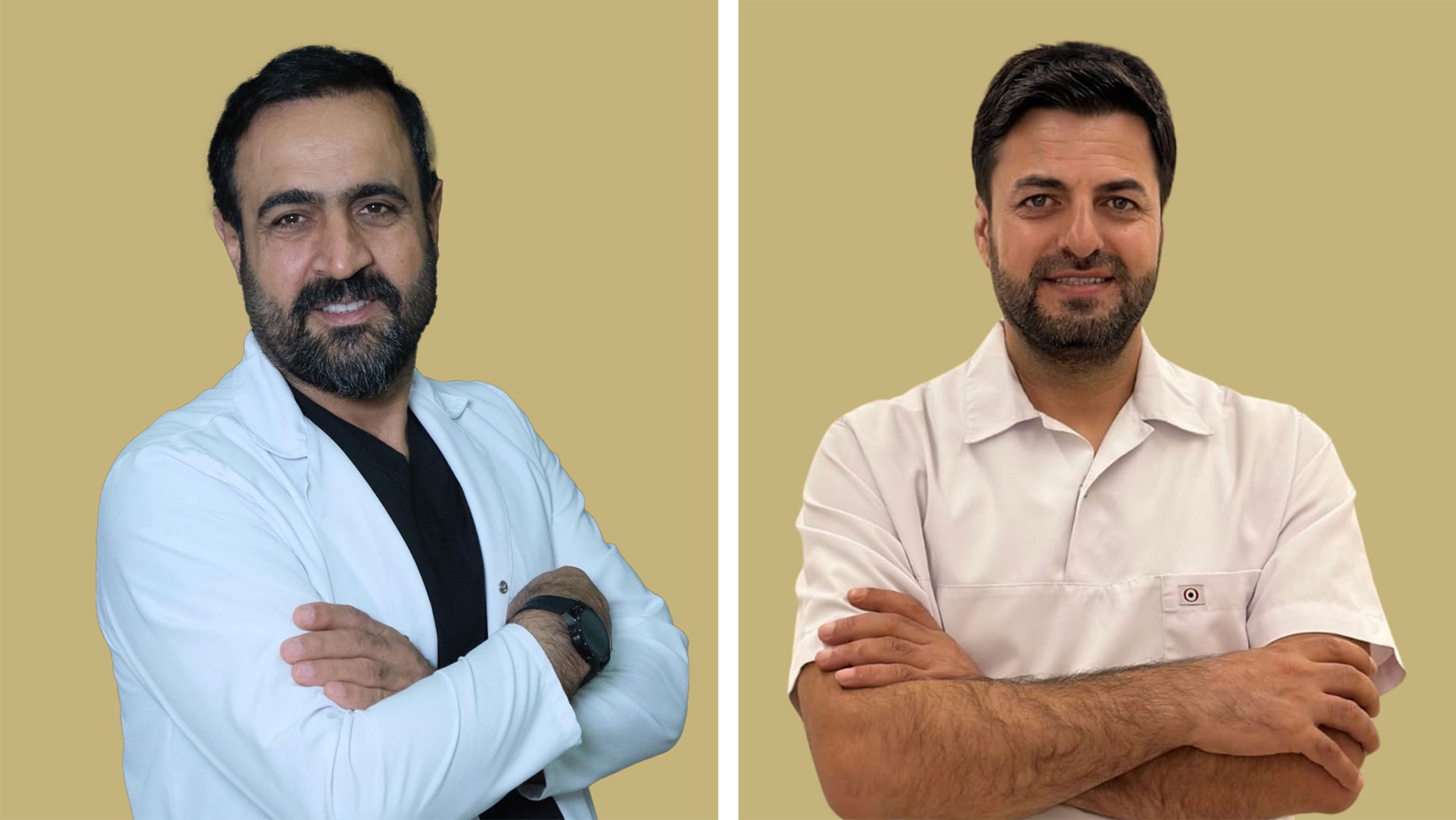
Extensive Experience And Expertise in Hair Transplant Turkey
Our doctors specialize in hair transplantation and have years of hands-on experience treating the following conditions:
-
Scalp hair loss
-
Beard and mustache transplants
-
Eyebrow restoration
-
Body hair transplants
ClinMedica also offers tailored treatments for those seeking female hair transplant Turkey, which addresses hair loss in women with customized planning.
They apply their deep understanding of facial harmony, graft survival rates, and natural hair growth patterns to tailor each transplantation to the patient’s unique needs and facial features.
What Makes ClinMedica’s Doctors Stand Out?
-
Over 15 years of experience in hair restoration.
-
High success rates with natural and permanent results.
-
Limited daily procedures to ensure quality over quantity.
-
Use of exclusive preservation solutions to enhance graft viability.
-
Continuous medical advancements and ongoing training with hair transplant innovations.
Advanced Hair Transplant Turkey Techniques
ClinMedica’s doctors utilize the latest and most advanced techniques, including:
FUE Hair Transplant Turkey :
The technique of extracting grafts from the donor area without leaving a scar, unlike its counterpart FUT.
Sapphire Pen Hair Transplant Turkey :
Enhancing precision and healing time using ultra-fine sapphire blades.
DHI (Direct Hair Implantation):
Ensuring denser, natural-looking results with Choi implanter pens.
These innovations are central to many hair transplant in Turkey treatment plans.
Stem Cells & AGF-39 Injection:
Supporting hair graft strength and post-transplant recovery.
Customized Hairline Design:
Creating a natural and age-appropriate hairline based on muscle structure and facial feature proportions.
Many patients explore turkey hair transplant before and after results to visualize outcomes before choosing their technique. Such visual documentation is especially useful for those comparing hair transplant turkey price ranges.
Artistic and Aesthetic Approach
Beyond medical expertise, our doctors possess an artistic vision, ensuring the most natural-looking hairline, density, and angulation.
Doctors meticulously plan each procedure to ensure the transplanted hair blends naturally with existing hair, resulting in seamless and flawless outcomes.
Patients can often see these results showcased in hair transplant Turkey before and after galleries.
Personalized Consultations & Patient-Centered Care
Every patient receives a customized treatment plan after a thorough consultation and scalp analysis. Whether it’s a full head restoration or a targeted transplant for the beard, eyebrows, or crown areas, our doctors ensure that the procedure aligns with your expectations. This personalized care has made ClinMedica a top choice for many considering best hair transplant in Turkey price.
Safe & Hygienic Medical Environment
At ClinMedica, we prioritize safety, hygiene, and comfort. Our doctors follow strict medical protocols, use single-use and sterile equipment, and ensure minimal downtime and fast recovery — essential standards in any hair transplant Turkey package.
Comparing Sapphire Pen Technique and DHI Technique

Hair density per square centimeter:
A key difference between the Sapphire Pen and DHI techniques is the density of transplanted hair.
The Sapphire Pen technique allows for up to 40 transplanted grafts per cm2, while the DHI technique can achieve up to 50 or even 55 grafts per cm2.
This ensures a higher density for the hair transplanted using the DHI technique.
Hair Transplant Turkey Techniques:
The Sapphire Pen technique involves opening the channels first, then transplanting the grafts one by one into these channels.
In contrast, the DHI technique opens the channels then transplants the grafts simultaneously using Choi pens, allowing more efficient use of space and resulting in higher density.
Shaving Requirements:
The DHI technique allows hair transplantation without shaving the bald area, although the donor area must be shaved to extract the grafts using the FUE technique.
This is particularly beneficial for people who prefer not to have all their head shaved.
The Sapphire Pen technique generally requires shaving the bald area if it’s in the middle or crown of the head, but not necessarily for the frontal area.
What is the right hair transplant turkey technique for me?
The DHI technique is suitable for most people, especially those who prefer not to have all their head shaved.
However, it is not suitable for individuals with curly African hair(Afro Hair).
Curly grafts are difficult to insert into the Choi pens’ hollow needles without breaking them.
Therefore, for such individuals, the Sapphire Pen technique or other methods that involve opening channels beforehand are recommended.
This also applies on the extraction of curly grafts, which requires extra care.
All Sorts of Hairlines Transplant
ClinMedica offers various hairline styles depending on the patient’s facial structure and preference, including:
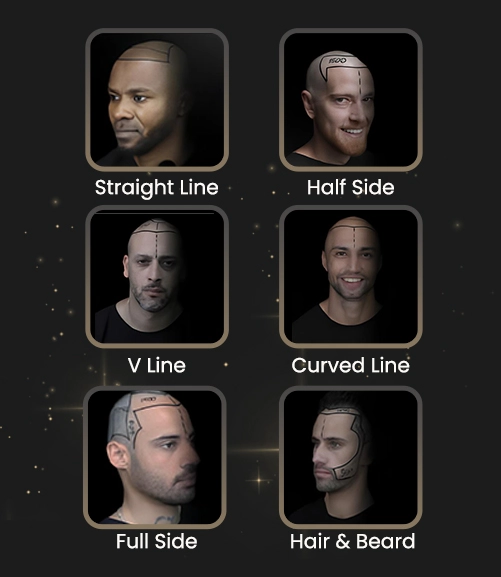
-
- Hair Transplant Curved Line
- Hair Transplant Straight Line
- Hair Transplant ”V” Line
- Hair Transplant With Beard
- Hair Transplant With Half Side
- Hair Transplant With Full Side
These options are part of the customization process at top clinics like ClinMedica, consistently ranked as offering the best Turkey hair transplant solutions.
Defining the hairlines using the laser approach
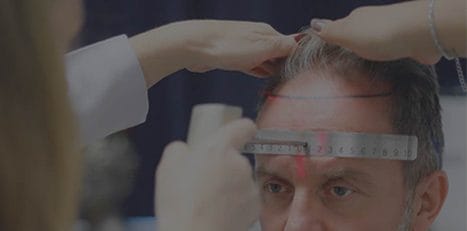
The process of determining the hairline is a crucial step that significantly impacts the final aesthetic outcome, that’s why we utilise this cutting-edge approach with the laser. The doctor carefully designs the hairline, ensuring it fits with the patient’s facial structure, muscle movements, and natural hair growth patterns. This meticulous planning ensures that the transplanted hair appears natural and compatible with the overall appearance.
Key Factors in Hairline Design
-
Facial Symmetry and Proportions
- The hairline is adjusted to match the essential ratio of facial aesthetics, ensuring a balanced and natural look.
- The doctor examines forehead width, temple shape, and facial angles to create a suitable hairline.
-
Muscle Movements and Natural Expression
- The hairline should not interfere with natural facial expressions.
- It is designed considering the forehead’s muscles and brow movement to avoid an unnatural or overly structured look.
-
Age-Appropriate Design
- A hairline that suits a younger patient may differ from that of an older patient.
- A too-low hairline can look unnatural, while a too-high hairline may not provide a youthful appearance.
-
Patient’s Natural Hair Density and Growth Direction
- The density and angulation of the transplanted hair must align with the natural growth pattern.
- The zigzag pattern for the implantation of the hair line ensures that the result looks natural.
-
Personal Preferences and Doctor’s Expertise
- While the doctor provides expert recommendations, the patient’s desired hairline shape is taken into account.
- The consultation helps patients choose between a rounded, slightly receded, or straight hairline model.
-
Laser Precision in Hairline Design
- Laser technology for defining the hair line ensures precise designing of new hair line, creating a more defined and natural-looking hairline.
- It makes it easier to define a compatible hair line that matches with each individual’s facial features for a more customised result overall.
By carefully analyzing these factors, the doctor ensures that the hairline suits the patient’s facial features, age, and expectations, leading to a successful and aesthetically pleasing hair transplant result.
Addressing Hereditary Baldness Concerns in Hair Transplant Turkey
Hereditary baldness, also known as androgenetic alopecia, is a common concern among individuals considering hair transplantation. Many patients worry that the genetic predisposition to hair loss may cause their newly transplanted hair to fall out over time. However, this is not the case, thanks to the strategic selection of the donor hair grafts.
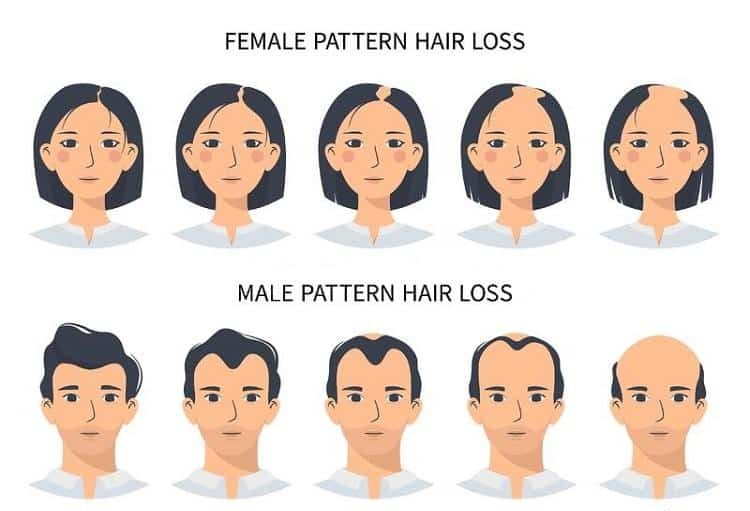
Why Doesn’t Genetic Baldness Affect Transplanted Hair?
The key reason why transplanted hair is not affected by hereditary baldness lies in the donor area selection. The back and sides of the scalp (known as the occipital region) contain hair grafts that are genetically resistant to dihydrotestosterone (DHT), the hormone responsible for hair loss in androgenetic alopecia.
- These DHT-resistant grafts retain their properties of being resistant to hair thinning even after being moved to the balding areas.
- Once transplanted, they will continue to grow naturally, just like they would in their original location.
- Unlike the existent hair in the balding areas, these new grafts do not shrink or fall out over time due to genetic factors.
Can the Transplanted Hair Ever Fall Out?
While the transplanted hair is permanent, some patients may experience temporary shedding after the procedure, known as shock loss that happens anytime between 2-8 weeks post the procedure. This is a normal part of the recovery process, and afterwards the hair regrows within a few months.
However, it is important to note:
- The surrounding native hair may continue to thin over time due to genetic factors. This is why some patients may require additional treatments, such as PRP (Platelet-Rich Plasma) therapy, AGF injections, or finasteride, to maintain overall hair density.
- A well-planned hair transplant considers a potential future hair loss progression to ensure a natural and long-lasting result.
Who Can Benefit from Hair Transplantation for Hereditary Baldness?
Hair transplantation is an effective solution for individuals experiencing genetic hair loss, provided they have a healthy donor area with sufficient hair grafts. Ideal candidates include:
- Men experiencing male pattern baldness with stable hair loss progression.
- Women with female pattern hair loss who still have a dense donor area.
- Individuals who have not responded well to medications like minoxidil or finasteride.
How to Maintain the Best Results?
Although transplanted hair is permanent, adopting a healthy hair care routine can further enhance the results:
-Regular PRP or AGF treatments to strengthen hair grafts.
-Using mild, sulfate-free shampoos to protect the scalp.
-Avoiding excessive heat and harsh chemicals to prevent damage.
-Following a healthy diet rich in vitamins, minerals, and proteins.
-Using supplementations such as: Saw palmitto, Rosemary oil, Vitamin C, Biotin and Zinc.
Grafts Extraction and Implantation in Detail
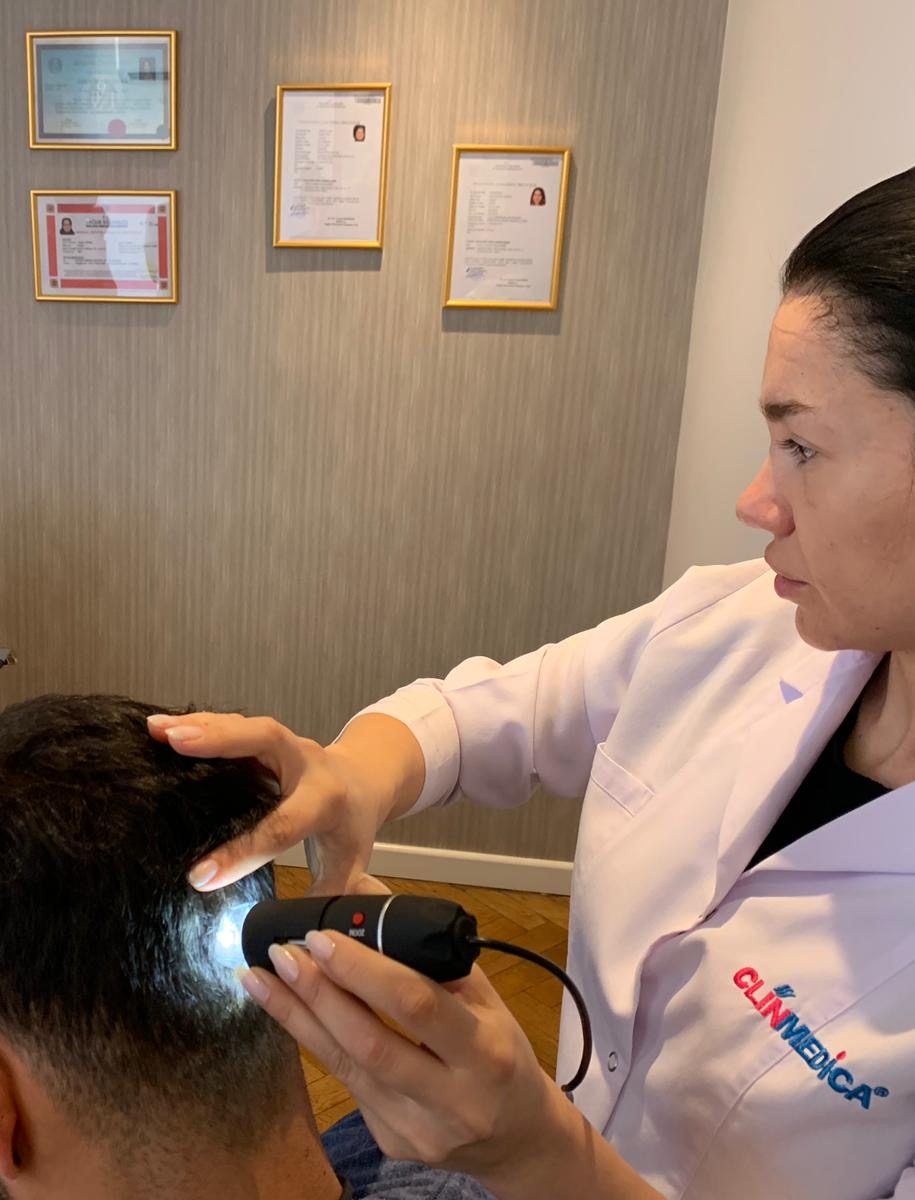
Graft Extraction and Implantation During Hair Transplant Turkey
First, the surgeon carefully extracts each hair graft individually using a Micro-motor device.
After dividing the back of the head (the donor area) into sections of 1 cm², The surgeon carefully and cautiously extracts the grafts (Grafts) from the donor area by extracting particular number of hair grafts per each cm2 in an arranged way to avoid damaging this area as well as to ensure the consistency of extracting the follicles (Grafts) from all parts of this area.
After extraction, we store the grafts in a hypothermosol solution, which keeps them alive for later implantation.
Graft Classification
At the same time the grafts are sorted based on the number of hair shafts present in each graft:
Single-hair graft which contains only one hair shaft.
Double-hair grafts which contains two hair shafts.
Triple-hair grafts which contains three hair shafs
Quadruple-hair grafts which contains four hair shafts.
This is so that later on the implantation of each hair graft to take place in the correct area that mimics the natural hair growth rhythm in the head.
How Do We Implant Them?
The surgeon divides the area where hair is to be transplanted according to the direction of the hair, and then divides each area into square centimeters (1 CM2) to ensure that the hair is transplanted in a consistent manner in terms of the number of grafts.
>Before the implantation takes place, it comes the most important step of the whole procedure which is : opening the channels into the baldness area.
Important factors to be considered when opening channels for hair implantation:
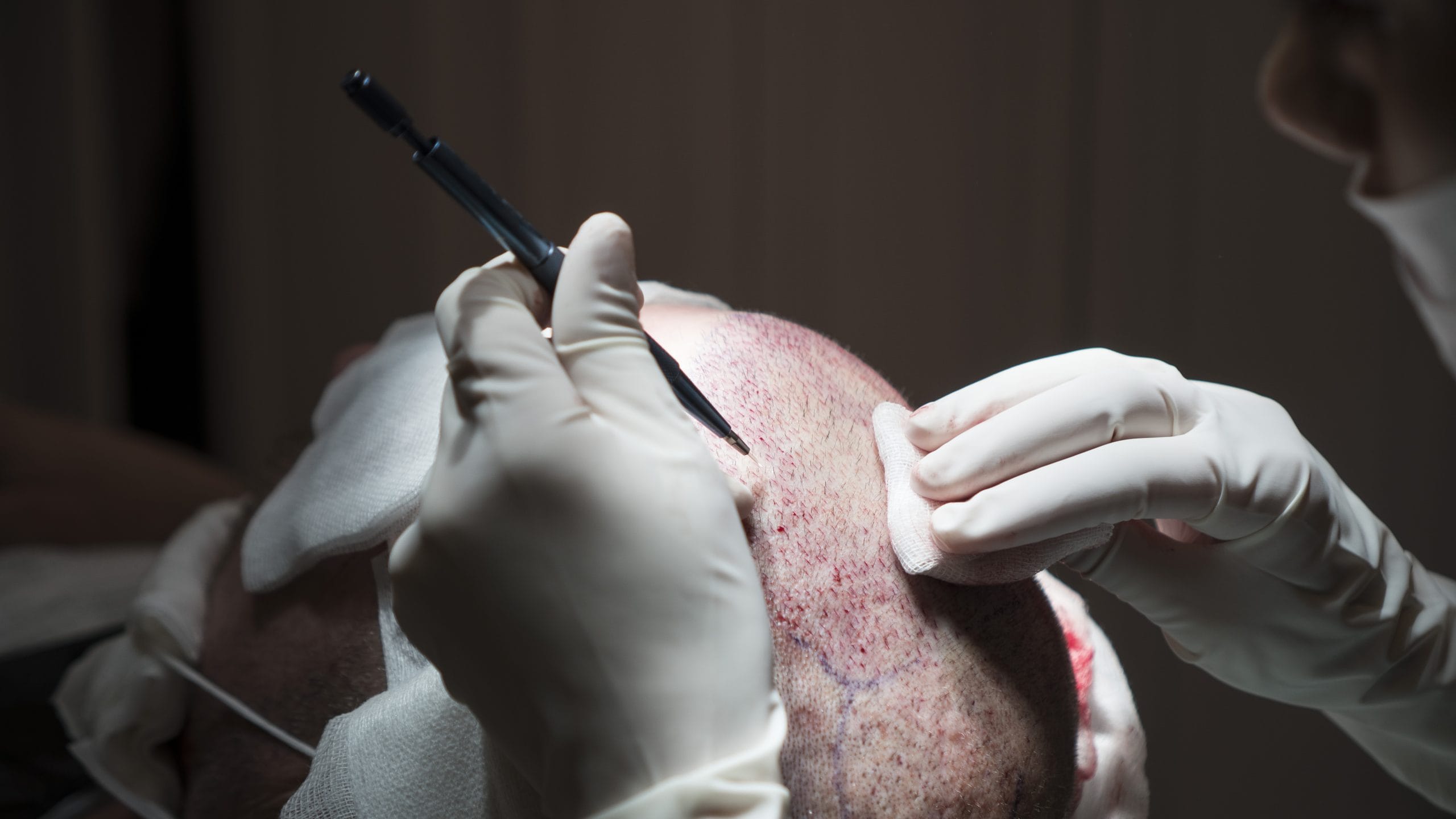
Hair Transplant Turkey Channel Depth: Most Critical Step
The depth of the canal that the doctor opens is a very important factor.
>If the channel ctreated is too deep, it can damage the nerves underneath, leading to a significant scarring in the baldness area, making it unsuitable for hair regrowth.
>On the other hand, if the channel is not deep enough, the hair graft may not reach the required depth for proper nourishment by the blood flow, which will be leading to hair graft death later on.
So, it is necessary to open the channel at the right depth to make sure that the hair graft reaches the desired place where it receives nourishment from the blood.
Hair Transplant Turkey Channel Direction
The direction of the channels (slits) created is also important in hair transplantation, where the channels must be opened in a similar way of the original hair; as each area of the head has a specific direction and angle in terms of hair growth that determines the manner and outlook of the hair overall, therefore the direction of the channels created contributes to giving a natural appearance to the hair.
In particular, the crown area is the most difficult place in the head in terms of knowing the direction of the hair, as it differs from one person to another, but ClinMedica’s doctors has enough experience to know the direction of the grafts during the clinical examination before the operation.
Opening the channels in the wrong direction does not lead to the failure of the growth of the newly transplanted grafts at all, but imagine with me that your newly transplanted hair grows in the opposite direction of the naturally existent hair or that some hairs are in one direction and the others in another direction.
Then you will never be able to style your hair properly. Additionally your hair will become overlapped with each other in some areas so the overall look wouldn’t look good neither natural.
Choosing the Location of the Graft
As we mentioned previously in the section dedicated for extracting grafts from the donor area, we sort the grafts based on the number of hair shafts included in them in order to implant each graft in its appropriate place.
>For example, we cannot implant a graft that has two or more hairs in the front of the head (hairline) because this will lead to an unnatural appearance, instead we must implant the graft that has only Single-hair graft in this area.
Graft thickness
Since the grafts are sorted based on the number of hair shafts they contain, they naturally vary in size and thickness. When the doctor opens a channel for implanting a single-hair graft, so the channel’s created must be 0.2 mm wider than the grafts width itself to ensure smooth implantation.
The same principle applies to grafts containing two, three, or four hair shafts. Since a single-hair graft is smaller than multi-hair grafts, the channel size is adjusted accordingly. For each graft, the doctor carefully opens a channel that is 0.2 mm larger than the graft size, ensuring precise placement and optimal survival of the transplanted grafts by appropriate integration with the surrounding tissue.
Hair Transplant in cm²
As previously mentioned, the doctor carefully divides the recipient area into equal squares of individual centimeters to ensure accurate and even distribution of the transplanted hair grafts across both sides of the head.

The number of grafts implanted per each cm² is determined by two main factors:
- The individual’s existing hair density.
- The hair technique used for the implantation.
For instance, if a person naturally has thin hair with a density of no more than 40 grafts per each centimeter square, it would not be advisable to transplant hair at a higher density than their original hair pattern; as maintaining harmony with the existing density is crucial in order for achieving a natural look.
However, hair density can also be controlled by the technique used. For example:
- With the Sapphire Pen technique, up to 40 hair grafts per each centimeter square can be implanted.
- With the DHI (Direct Hair Implantation) technique, the density can reach up to 55 grafts per each centimeter square.
Ultimately, the final hair density depends on several key factors, including:
-The availability and strength of the donor area
-The size of the bald area
-The chosen transplantation method
In some cases, due to limited donor area supply or extensive baldness, a second hair transplant session may be necessary to achieve the desired density. This highlights that achieving high-density hair transplantation-particularly in terms of the number of grafts per square centimeter-relies on a combination of individual hair characteristics, donor availability, and surgical technique.
Number of Grafts per cm²
We determines the number of hair grafts, based on several factors:
Natural Hair Density:
Normal hair density varies from person to person. You see people with very high hair density, others with medium density, and others with low density.
So, we examine the hair grafts in an approximate cm² to determine the natural hair density, and then we decides the number of grafts to implant in each cm².
Minimum and Maximum Number of grafts per cm²:
Despite all the different cases of hair density in all people, we must consider the minimum and maximum number of grafts per cm².
That is, it is not necessary to plant fewer than 15 grafts per cm², because the grafts will disperse and lose their strength, which they derive from their proximity to each other.
Also, we should not plant more than 50 grafts per cm², because the grafts will lose their strength due to contact, just like the electrical contact when two electrical wires touch each other.
Here lies the secret in the success or failure of the hair transplant process, which many doctors in Turkey overlook to finish the work quickly, but ClinMedica, as we mentioned at the beginning, cares about the smallest details.
Channel Opening During DHI Hair Transplant Turkey
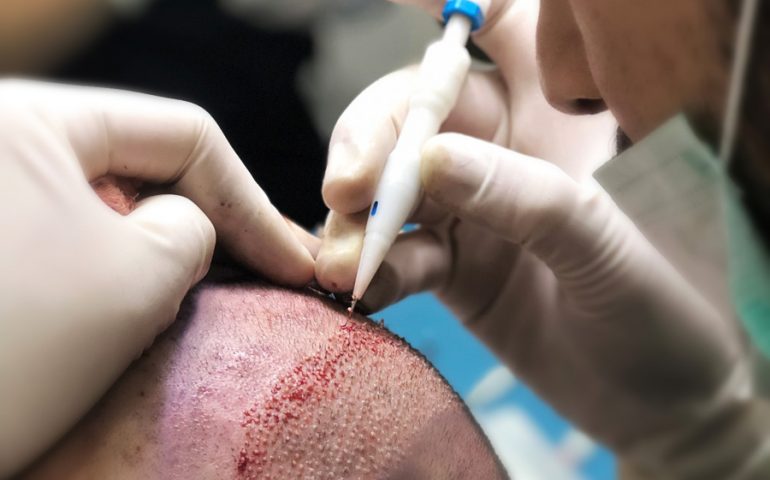
In the DHI technique, the surgeon opens the channels and implants the grafts at the same time. This simultaneous approach allows more density and better space utilization — a key advantage often cited in hair transplant Turkey reviews.
When using the Sapphire Pen, we calculate an extra 0.2 mm width for each channel to allow easy graft insertion.
However, in DHI, the graft is inserted immediately, so the extra space isn’t required. This efficiency allows for higher density and makes DHI a preferred option for patients focused on maximizing results in their hair transplant Turkey price.
These details are especially important for patients reading hair transplant in Turkey reviews or evaluating clinic performance based on density outcomes.
Why DHI Technique Maximizes Space and Hair density
Since DHI doesn’t require the 0.2 mm additional spacing, more grafts can fit within the same area. Still, minimum density rules apply — no fewer than 15 grafts/cm².
This technique is frequently offered in Turkey flight hair transplant packages, particularly for international patients.
Also, for patients comparing hair transplant cost Turkey vs USA, DHI offers great value: higher density at a much lower price.
Suitability for DHI Technique
The DHI technique is suitable for most patients, especially those who prefer not to shave their entire head — a frequent request in turkey hair transplant plane programs tailored for quick recovery.
However, DHI is not suitable for individuals with Afro-textured hair. The curved nature of their grafts makes it difficult to insert them into the Choi pen without breakage. That’s why Afro hair transplant Turkey procedures are often done using Sapphire or other manual techniques.
This applies to both implantation and extraction. Curly hair grafts require additional precision, care, and surgical experience.
For international patients comparing hair transplant Mexico vs Turkey, it’s important to understand that Turkey offers not only better cost efficiency but broader expertise in handling different hair types.
ClinMedica provides personal consultations to assess hair type, graft strength, and ideal method — a hallmark of top-tier Istanbul Turkey hair transplant clinics.
WHAT IS THE NORWOOD HAIR TRANSPLANT SCALE?
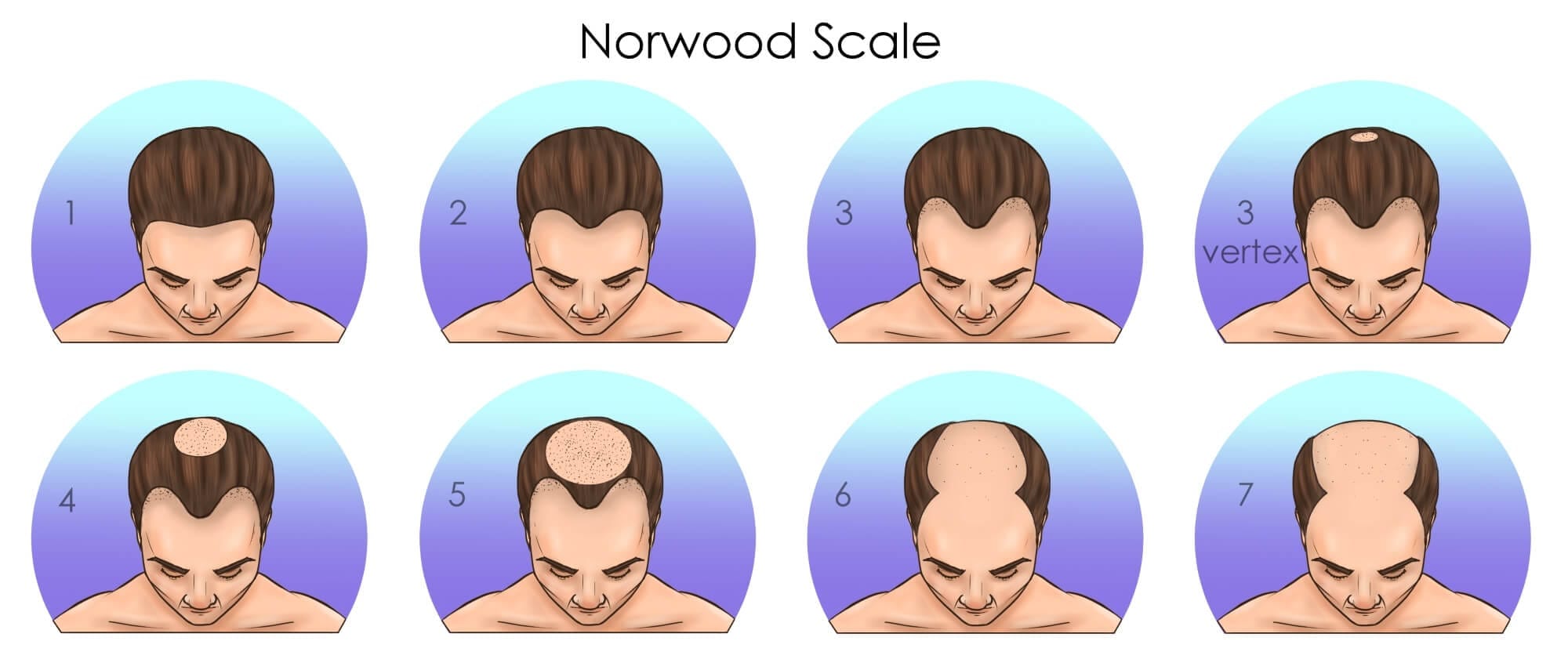
The Norwood Hair Transplant Scale shows your hair loss level.
Norwood Scale classifies hair loss levels in degrees from 1 to 7, with 12 different loss types. In addition to determining the level of your hair loss; Moreover, it gives an approximate idea of the type of treatment that should relate to your hair loss. If the hair loss is advanced, it may be troublesome to win your hair with pharmaceutical products. In such cases, you must consider the ultimate solution for your hair loss problem by undergoiıng the right hair transplant surgery.
How is Hair Transplant Turkey Performed ?
ClinMedica meticulously designs the hair transplantation process to ensure top quality and success rates:

Initial Consultation and Blood Sample:
We begin with a comprehensive consultation and take a blood sample. This sample undergoes two stages of analysis.
The first stage is a rapid analysis, with results available within 15 minutes, to check for any infectious diseases in the blood that could hinder the procedure.
The second stage, which takes about two and a half hours, determines the cause of hair loss, such as vitamin deficiencies.
This helps the doctor prescribe the appropriate medication and vitamins post-transplant.
Drawing Implantation and Extraction Lines:
Following the tests, the doctor draws the implantation lines and the lines for extracting the grafts from the donor area.
This precise planning is crucial for achieving natural and aesthetically pleasing results.
Administering Local Anesthesia:
Our specialists administer local anesthesia using a needle-free, pain-free technique.
Following this, they inject a serum into the scalp of the donor area to lift the skin away from the veins and arteries, facilitating the safe and efficient extraction of grafts using the micro-motor device with FUE technology.
Graft Extraction and Sorting:
We carefully sort the extracted grafts. We separate grafts with one hair from those with two, three, or four hairs.
This sorting is essential because we implant different types of grafts in specific areas to ensure a natural look.
For example, we place single-hair grafts in the frontal area to mimic the natural hairline.
Opening Channels and Implantation:
After sorting, the doctor opens the channels in the recipient area. Once the channels are prepared, specialists place the sorted grafts into these channels.
Where Else Can Hair Implants Be Applied?
You can implant hair in only two places other than your head: the beard and the eyebrows. Both of them go by the same process as hair transplant for the head. Hair transplant has become a popular procedure nowadays. It’s a simple and effective solution for hair loss, especially for individuals who experience hair loss at a young age. Hair transplant requires experienced surgeons and technicians to be done perfectly without flaws. So, take your time and think carefully before proceeding.
Hair Transplantation in Two Sessions

Why Two Sessions?
This is a common question from people who need two sessions to complete their hair transplantation. Here’s the reason:
Hair transplantation is quite simple:
we take grafts from the donor area, typically behind the ears, without causing any harm to this area in the future.
However, the donor area differs from one person to another in terms of size and density, and this impacts whether a single session or multiple sessions are needed.
Insufficient Grafts:
If the donor area is weak and small while the bald area is large (from the front to the crown), hair transplantation must be done in two sessions.
The first session covers the front to the middle of the head, and the second session covers the middle to the crown.
The main reason is the insufficient number of grafts to cover the entire bald area in one go.
Logically, a small donor area cannot cover a large bald area, so we must perform the transplantation in two sessions.
Healing Time:
In the first session, grafts are extracted in a thoughtful and coordinated manner to prevent damage to the donor area.
These grafts do not grow back, so the area needs time to heal and for the grafts to be close to each other again.
Most people need nine to 12 months for this area to heal before a second session can cover the remaining bald areas.
Compatibility:
If the bald area is compatible with the donor area, or if the bald area is small compared to the donor area, a single session may be sufficient.
Density Requirements:
Some people may ask if it’s possible to perform one session with lower density to cover the entire head.
This is not advisable because hair grafts need a minimum number of neighboring grafts to support each other and grow properly.
For instance, there must be at least 20 grafts per square centimeter for them to grow effectively. If fewer grafts are transplanted, they won’t support each other and won’t grow.
On the other hand, planting more than 55 grafts per square centimeter can cause overcrowding, leading to contact and subsequent damage to the grafts.
Hair Transplant Cost in Turkey
Turkey offers high-quality hair transplant services at competitive prices, making it a preferred destination for those seeking hair restoration.
Compared to countries like America and those in Europe, Turkey provides the same, if not better, quality of care at a fraction of the cost.
This affordability does not compromise the quality of the procedure.
Turkish clinics, like ClinMedica, utilize the latest techniques and technologies, ensuring excellent outcomes for patients.
ClinMedica provides the best FUE hair transplant results in Turkey, with the most advanced techniques, at the most affordable costs.
At ClinMedica, we offer you all the advantages of turkish hair transplant procedures that are offered by other countries (America, Canada, Australia, Europe, etc.)
at incredibly competitive prices and superior quality, including the latest scientific techniques used to perform the best hair transplant.
We deal with only highly experienced doctors, so you will have a wonderful and distinctive experience through precise incisions without any scars left behind.
Consistent FUE hair transplant across the head conducted at natural angles and directions for the newly implanted grafts, thus you will get a very natural appearance without being noticed for having any hair procedure.
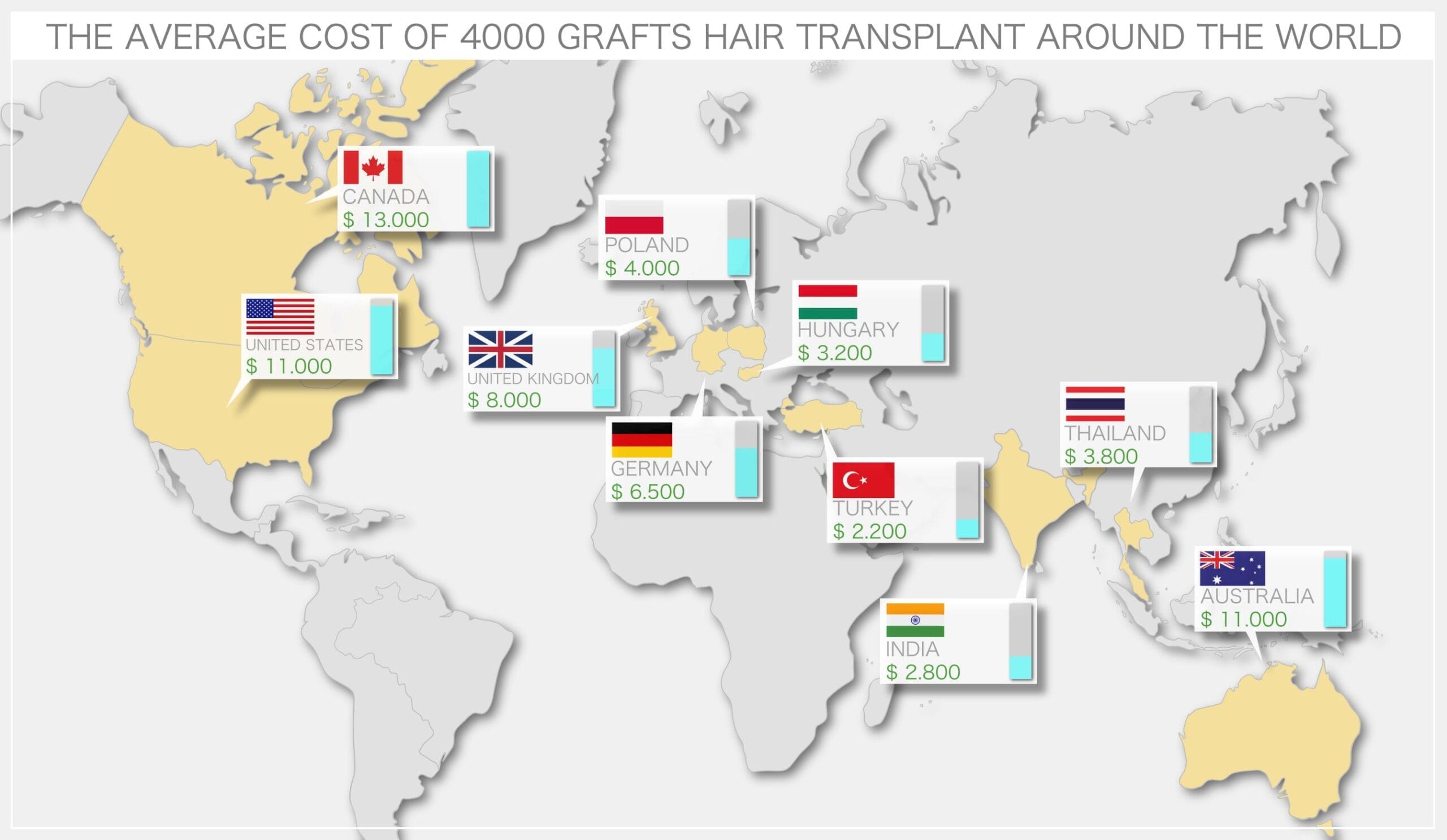
Hair transplantation Affordability:
Hair transplant procedures in Turkey are much more affordable than in many Western countries. Despite the lower cost, the quality of service remains exceptional.
Turkey offers budget-friendly hair restoration solutions thanks to lower living costs, competitive pricing, and government support for medical tourism.
For example, in European countries or even in America or England, the doctor calculates the price of a hair transplant based on the number of follicles. For example, for each follicle, the doctor takes $2 or three dollars, or even sometimes up to five or 10 dollars per follicle.
While in Turkey, the matter is completely different, as the price of the operation is calculated based on the operation as a whole, meaning that the maximum number of follicles is transplanted at a unified price.
Of course, these prices vary from one clinic to another, depending on the doctor’s experience and on many other data. For example, you can find a clinic that performs hair transplantation at a price of 1,200 dollars, while you will find some clinics offering a price of 2,000 dollars, and some other clinics offer a price of 3,000 or 4,000 dollars.
ClinMedica vs Other Hair Transplant Clinics in Turkey
When evaluating the top 10 hair transplant clinic in Turkey, ClinMedica consistently ranks among the most trusted names — not only due to medical quality but also personalized care.
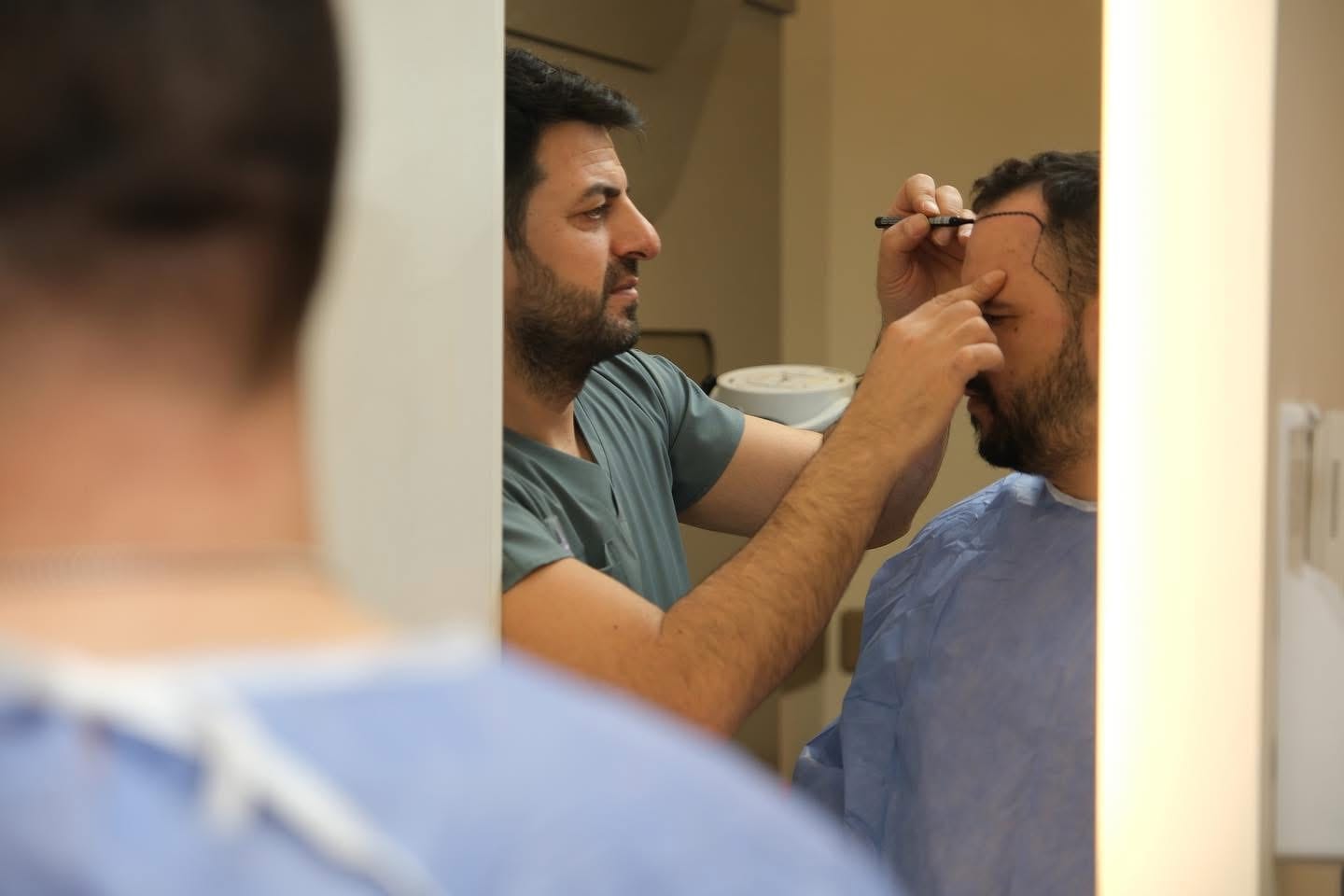
Exclusive Focus on Each Patient
Unlike many clinics that prioritize quantity, ClinMedica performs only one procedure per doctor per day. This allows maximum focus and results — a key reason why many patients searching for the best hair transplant clinic in Turkey choose ClinMedica.
This approach is frequently mentioned in hair transplant Turkey reviews as a major factor in patient satisfaction.
Hygiene and Equipment Standards
All tools — such as Choi pens and sapphire blades — are used once per patient, never reused. This ensures:
-
Zero cross-contamination
-
Maximum graft survival
-
Compliance with international medical standards
Such strict protocols are rare, even among the best hair transplant clinics in Turkey.
Highly Trained Surgeons
ClinMedica’s surgeons have performed thousands of procedures and are also experts in facial harmony, density planning, and ethnic hair variations an important advantage for those researching Afro hair transplant Turkey solutions.
Comprehensive, Patient-Centered Packages
For international patients, the clinic offers:
-
Airport pickup
-
Hotel accommodation
-
Language interpretation
-
All-inclusive procedure packages
Whether you’re choosing a hair transplant Turkey package with flight or a local option, ClinMedica’s services are transparent and tailored to each individual.
Post Hair Transplant Operation Instructions
Adhering to post-operative care is essential for a successful result — just as important as the procedure itself. This is especially emphasized in many hair transplant in Turkey reviews, where results often depend on patient discipline.

Day 1: Immediate Care
You may notice a mix of fluid and slight blood on the bandage or pillow — this is normal. Avoid touching or washing the area.
Activities to Avoid:
-
No swimming, gym, or intense activity for 1 month
-
Avoid alcohol for 7 days
-
Refrain from sexual activity for 7 days
-
Do not cut or shave the recipient area for 6 months
Such precautions are standard across best hair transplant Turkey recovery plans.
Hair Washing Instructions (Day 3 and Onward):
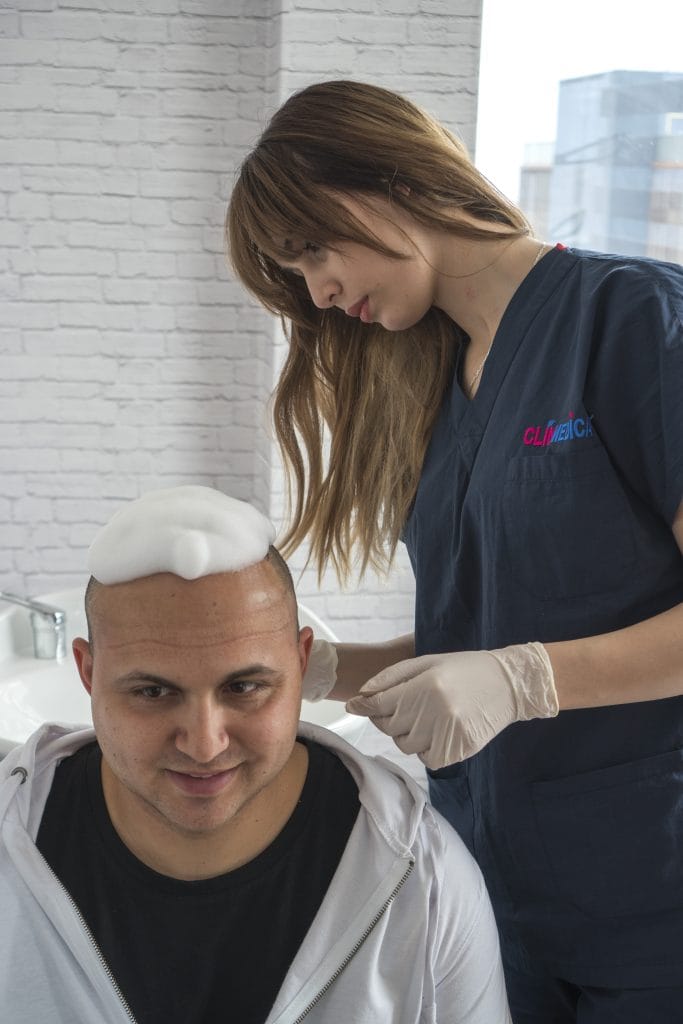
-
Apply lotion for 30 minutes before washing
-
Use warm water, no pressure
-
Gently apply shampoo as foam — no rubbing
-
Dry with soft tissue, no towel friction
This process supports graft stabilization and early healing, often included in hair transplant Turkey package aftercare kits.
After 6–9 Months:
-
Scissor cuts allowed after 6 months
-
Razor shaving allowed after 9 months
-
Full recovery and visible results take up to 12 months
Patients comparing hair transplant Turkey before and after photos must be patient — full growth is gradual.
How to get the hair transplant result you want
Think of transplanted hair as a planted tree — it grows with care. To protect your results:
-
Use sulfate-free shampoos
-
Take vitamins: Biotin, Zinc, Vitamin C
-
Use topical oils like rosemary or saw palmetto
-
Consider PRP or AGF injections for added growth
The results typically last 15–20 years, often longer. Those wondering how much is Turkey hair transplant worth should know — the investment pays off in permanence and confidence.
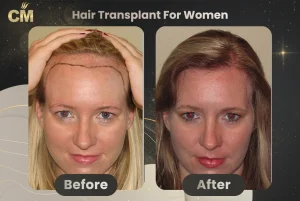
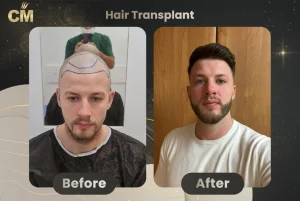
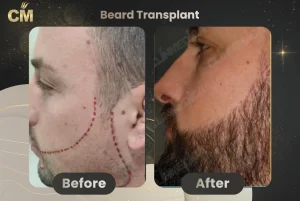
Turkish Hair Transplant Results and Patient Commitment
Achieving the best results from a turkish hair transplant procedure not only relies on the expertise of the surgeon and the quality of the clinic but also significantly depends on the patient’s diligence and commitment to post-operative care instructions.
Think of hair transplantation like planting a tree. When a farmer plants a tree, it is small and fragile. This stage is akin to the successful transplantation of hair follicles.
However, for this tree to grow and bear fruit, the farmer must diligently care for it, providing the appropriate fertilizer, water, and protection from harmful elements.
Similarly, a patient must take on the role of this farmer. After a turkish hair transplant, patients must adhere to all post-operative instructions given by their doctor.
This includes avoiding chemicals found in certain shampoos, hairsprays, and other hair products that could damage the new hair.
Patients must also ensure they are taking all prescribed vitamins and medications to promote healthy hair growth.
Commitment to these care routines is crucial for the hair to grow strong and healthy, ultimately yielding the best possible results from the turkish hair transplant.
How Long Do Turkish Hair Transplant Results Last?
Many people’s hair transplant results, which are typically visible within a year, might persist for the rest of their lives. Without a doubt, you can anticipate benefits to persist for at least 15-20 years.
One of the reasons it is so crucial to be satisfied with the outcomes of a turkish hair transplant is the possibility of permanence.
The outcomes of your hair transplant are designed to work for you for a longer time if you are taking medication to stop further hair loss.
There is a danger that your hair transplant results won’t fit you anymore if additional hair loss has occurred if you don’t take drugs to stop further hair loss.
A second or third turkish hair transplant is an option in circumstances where the hair has receded behind the implanted hairs.


